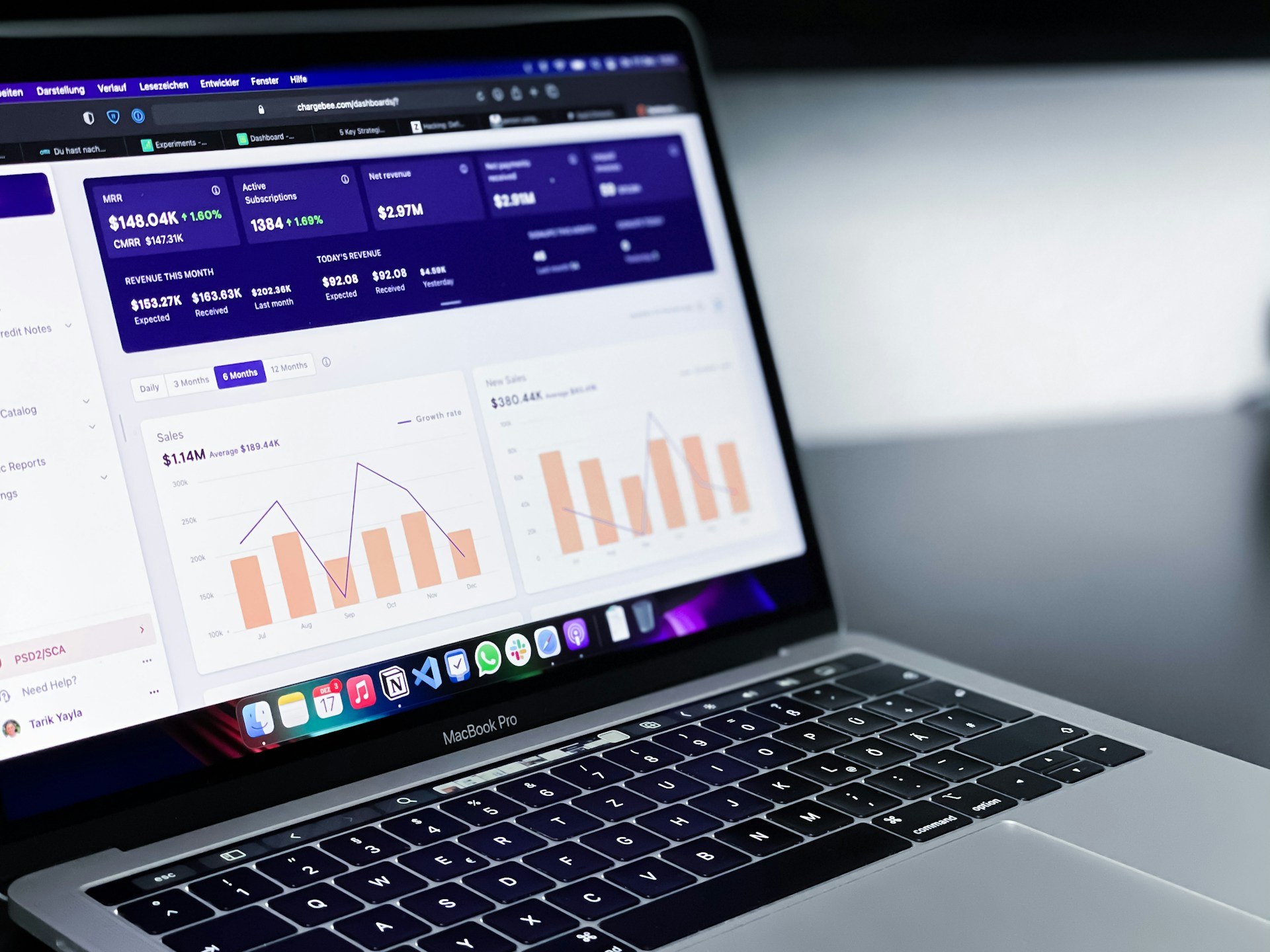How to
Cracking the Puzzle: Discovering Roman Numerals That Multiply to 35

Welcome to the fascinating world of Roman numerals, where numbers are represented by letters in a system that has stood the test of time. Today, we embark on a journey to unravel the enigmatic puzzle of discovering which Roman numerals multiply together to equal 35. Get ready to exercise your brain and sharpen your problem-solving skills as we dive into this intriguing challenge!
Understanding Multiplication with Roman Numerals
Have you ever wondered how multiplication works when using Roman numerals? It may seem complex at first, but once you grasp the fundamentals, it becomes an intriguing puzzle to solve. Unlike our familiar Arabic numeral system, where multiplication is straightforward, Roman numerals require a different approach.
To multiply with Roman numerals, each letter carries a specific value: I equals 1, V equals 5, X equals 10, L equals 50, C equals 100, D equals 500, and M equals 1000. To calculate the product of two Roman numerals, simply add their values together according to the position they hold in the equation.
For instance, multiplying XXV by II would involve adding X (10) to itself twice (20) and adding V (5), resulting in XXXXVV, which simplifies down to LXXV or 75. This method may demand some practice but mastering it unlocks a fascinating world of mathematical possibilities within the realm of Roman numerals.
Factors of 35 and Possible Combinations
- Let’s dive into the fascinating world of Roman numerals and explore the factors of 35. When we talk about factors, we’re looking for numbers that can be multiplied together to give us a specific result—in this case, 35.
- The factors of 35 are the numbers that divide evenly into it without leaving a remainder. In other words, they are the building blocks that make up this unique number puzzle.
- To find possible combinations of Roman numerals that multiply to 35, we need to think outside the box. This requires creativity and a strategic approach to solving the problem at hand.
- By examining different pairs of Roman numerals and their corresponding values, we can uncover hidden patterns and relationships that lead us closer to cracking this intriguing puzzle.
- Stay tuned as we unravel more mysteries behind Roman numerals and discover innovative ways to tackle mathematical challenges!
Trial and Error Method for Solving the Puzzle
When faced with the challenge of discovering Roman numerals that multiply to 35, one method you can employ is the trial-and-error approach. This involves systematically testing different combinations of Roman numerals to find the solution.
Start by breaking down 35 into its factors—in this case, 5 and 7. Then, experiment with various Roman numeral representations for these numbers. For instance, V (5) multiplied by VII (7) equals XXXV (35).
It may take some time and patience as you test different combinations until you arrive at the correct answer. Remember, perseverance is key when using the trial-and-error method to solve puzzles involving Roman numerals.
Don’t be discouraged if your initial attempts don’t yield results; keep exploring new possibilities until you crack the code. Enjoy the process of uncovering hidden patterns within Roman numeral multiplication!
Alternative Methods for Solving the Puzzle
When faced with the challenge of finding Roman numerals that multiply to 35, there are alternative methods you can explore to crack the puzzle. One approach is to leverage prime factorization; breaking down 35 into its prime factors (5 and 7) can guide you in constructing the corresponding Roman numerals. Additionally, utilizing a systematic approach by listing out all possible combinations and eliminating those that don’t meet the criteria can help narrow down your options. Another method involves leveraging divisibility rules within Roman numerals to deduce potential solutions more efficiently. Thinking outside the box and approaching the problem from different angles may lead you to unexpected revelations in solving this intriguing puzzle.
The Importance of Critical Thinking in Problem Solving
When faced with a problem like finding Roman numerals that multiply to 35, critical thinking becomes your best companion. It’s not just about following a set formula; it’s about approaching the puzzle from different angles and exploring various possibilities.
Critical thinking allows you to break down the problem into manageable parts, making it easier to analyze and solve. It encourages you to think outside the box, consider unconventional solutions, and adapt your approach as needed.
By engaging your critical thinking skills, you can identify patterns, make logical deductions, and test hypotheses effectively. It challenges you to question assumptions, seek alternative viewpoints, and explore new strategies for tackling challenges.
In problem-solving scenarios involving Roman numerals or any other complex task, embracing critical thinking is key to unlocking creative solutions and achieving success.
Conclusion
As we wrap up our exploration of Roman numerals that multiply to 35, it’s clear that this puzzle is not just about numbers; it’s a mental exercise in problem-solving and critical thinking. By delving into the factors of 35 and experimenting with different combinations, we sharpen our analytical skills and enhance our ability to think outside the box.
The trial-and-error method may seem tedious at first, but it teaches us patience and perseverance as we navigate through various possibilities. Moreover, considering alternative strategies like prime factorization can offer new insights and approaches to cracking the code of Roman numerals.
What makes this puzzle intriguing is not just finding the solution itself but also appreciating the journey of discovery along the way. It challenges us to push past limitations, embrace creativity in our reasoning, and hone our cognitive abilities for future problem-solving endeavors. So keep exploring, keep learning, and let your curiosity drive you towards unlocking more mysteries hidden within numbers!
FAQs
1. Can Roman numerals be multiplied together?
Yes, Roman numerals can indeed be multiplied together. By understanding the values assigned to each numeral and applying basic multiplication principles, you can calculate products using Roman numerals.
2. What factors of 35 can result in a product using Roman numerals?
The factors of 35 are 1, 5, 7, and 35. To find combinations that multiply to 35 in Roman numerals, you need to explore different pairings of these factors while considering the unique properties of Roman numerical representation.
3. Is trial and error the only method for solving puzzles involving Roman numeral multiplication?
While trial and error is a common approach to solving such puzzles. There are alternative methods like prime factorization or systematic elimination that can also be efficiently utilized to crack the code of multiplying Roman numerals.
4. How important is critical thinking in problem-solving involving Roman numerals?
Critical thinking plays a crucial role in tackling challenges related to manipulating. Roman numerals for calculations. It involves analyzing information logically. Making connections between different elements and devising strategic approaches to arrive at solutions effectively.
5. Why is it beneficial to engage with puzzles like discovering Roman numerals that multiply to specific numbers?
Engaging with puzzles involving novel applications of mathematical concepts like multiplying Roman numerals not only sharpens your problem-solving skills but also enhances your understanding of numerical systems from different cultures throughout history.
How to
Peñiculs: A Deep Dive into the Captivating World of Pterosaurs

The term “peñiculs” is not commonly found in mainstream discussions about prehistoric life. However, it refers to a fascinating and often overlooked aspect of the prehistoric world – specifically, the pterosaurs. These magnificent flying reptiles, often confused with dinosaurs, dominated the skies during the Mesozoic Era. In this article, we will explore the world of pterosaurs, their evolutionary history, physical characteristics, and ecological significance.
The Evolutionary Journey of Pterosaurs
Origins and Early Evolution
Pterosaurs first appeared in the late Triassic period, around 228 million years ago. Their evolutionary journey is marked by a remarkable adaptation to aerial life. Pterosaurs belong to the order Pterosauria, which is divided into two main groups: the Rhamphorhynchoidea and the Pterodactyloidea. The former includes the early pterosaurs, characterized by long tails and smaller bodies, while the latter comprises the more advanced, larger pterosaurs with short tails and elongated wing structures.
Diversification and Dominance
Throughout the Jurassic and Cretaceous periods, pterosaurs diversified into a wide array of species. This diversification allowed them to occupy various ecological niches. Some, like Pteranodon, had wingspans exceeding 30 feet and dominated coastal environments, while smaller species like Anurognathus were adept at maneuvering through dense forests, hunting insects.
Physical Characteristics of Pterosaurs
Skeletal Structure and Adaptations
Pterosaurs possessed a unique skeletal structure that enabled their flight capabilities. Their bones were hollow and air-filled, reducing their weight without compromising strength. The most distinctive feature was their wings, formed by a membrane of skin and muscle stretching from an elongated fourth finger to their ankles or, in some species, to the tail.
Variations in Size and Form
Pterosaurs exhibited remarkable variation in size and form. Quetzalcoatlus, one of the largest known pterosaurs, had a wingspan of over 35 feet and stood as tall as a giraffe. In contrast, Nemicolopterus, one of the smallest, had a wingspan of just over 10 inches. These size variations reflect the adaptability of pterosaurs to different environments and their varied dietary preferences, from fish and squid to small terrestrial vertebrates and carrion.
Ecological Significance
Predatory and Scavenging Roles
Pterosaurs played crucial roles in their ecosystems as both predators and scavengers. Large pterosaurs, such as Hatzegopteryx, likely preyed on sizeable marine animals and even small dinosaurs. Their sharp beaks and robust teeth suggest a diet that included both fish and other vertebrates. Smaller species, meanwhile, might have fed on insects, contributing to the control of insect populations.
Interactions with Dinosaurs and Marine Life
Pterosaurs coexisted with dinosaurs and various marine reptiles, often competing for resources. Fossil evidence suggests that some pterosaurs might have scavenged dinosaur carcasses or stolen prey from other predators. Their ability to fly gave them a significant advantage in spotting food sources from above and quickly moving between feeding grounds.
Fossil Discoveries and Scientific Insights
Significant Fossil Sites
Fossil discoveries from locations such as the Solnhofen Limestone in Germany and the Santana Formation in Brazil have provided critical insights into pterosaur anatomy and behavior. These well-preserved fossils have revealed details about their wing structure, feeding habits, and even skin and muscle impressions.
Technological Advances in Paleontology
Advancements in imaging technology, such as CT scanning and 3D modeling, have revolutionized our understanding of pterosaurs. These technologies allow scientists to reconstruct flight mechanics, muscle structure, and even coloration patterns, offering a more comprehensive view of how pterosaurs lived and thrived.
The Legacy of Pterosaurs
Influence on Modern Perceptions of Flight
Pterosaurs have significantly influenced our understanding of the evolution of flight. Studying their adaptations helps scientists draw parallels with the flight mechanisms of birds and bats, the only other vertebrates to achieve powered flight. This comparative analysis sheds light on the convergent evolution of flight across different species.
Pterosaurs in Popular Culture
Pterosaurs have also left a lasting impact on popular culture, frequently depicted in movies, literature, and art. Their awe-inspiring appearance and the mystery surrounding their extinction continue to captivate the public imagination, ensuring that these magnificent creatures remain a topic of fascination and study.
Conclusion
Peñiculs, or pterosaurs, represent a remarkable chapter in the history of life on Earth. Their evolutionary adaptations, diverse ecological roles, and the insights they provide into the mechanics of flight make them a subject of enduring scientific interest. As paleontology continues to evolve with new discoveries and technologies, our understanding of these ancient aviators will undoubtedly grow, revealing even more about their intriguing world and the skies they once ruled.
How to
Assumira: The Hidden Obstacle Preventing You from Achieving Success

Have you ever felt like there’s an invisible barrier holding you back from reaching your full potential? Meet Assumira – the sneaky culprit sabotaging your success without you even realizing it. In this blog post, we’ll uncover the hidden ways in which Assumira affects your mindset and explore actionable strategies to break free from its grip. Get ready to unlock a new level of awareness and empowerment as we delve into the world of Assumira!
What is Assumira?
Assumira is not just a word; it’s a concept that can shape the way you perceive yourself and the world around you. It goes beyond mere assumptions and delves into the realm of subconscious beliefs that influence your thoughts, actions, and ultimately, your outcomes.
At its core, Assumira operates like a silent puppeteer pulling strings in your mind, dictating what you can or cannot achieve based on ingrained perceptions. It thrives on uncertainties and fears, feeding off doubt and hesitation to keep you confined within self-imposed limitations.
By understanding Assumira’s presence in your daily life, you gain insight into how it manifests in subtle ways – from questioning your abilities to fearing failure before even trying. Breaking free from Assumira requires introspection and a willingness to challenge longstanding beliefs that may no longer serve your growth.
How Assumira Affects Your Mindset
Assumira, the sneaky saboteur of success, can quietly infiltrate your mindset without you even realizing it. It sows seeds of doubt and limits your potential by making you believe in false assumptions. Your thoughts become clouded with negativity as Assumira whispers tales of failure and inadequacy into your subconscious.
As Assumira takes root in your mind, it distorts reality and skews your perception. You start to second-guess yourself, questioning every decision and choice you make. The once-clear path to success becomes muddied with uncertainty and fear.
Operating under the influence of Assumira can lead to self-sabotage as you shy away from taking risks or pursuing opportunities that could propel you towards your goals. Your confidence wanes, replaced by a sense of resignation and defeatism.
Breaking free from the grip of Assumira is essential for cultivating a positive mindset conducive to growth and achievement. By recognizing its presence and challenging its falsehoods, you can reclaim control over your thoughts and actions. Trust in yourself and challenge those negative assumptions holding you back from reaching your full potential.
Signs that You are Operating Under Assumira
Do you find yourself hesitating to take risks or try new things because you assume the outcome will be negative? This could be a sign that Assumira is at play in your mindset. When you constantly jump to conclusions without solid evidence, it can hinder your growth and success.
Another indicator of operating under Assumira is when you make decisions based on assumptions rather than facts. Instead of gathering information and analyzing situations objectively, you rely on preconceived notions that may not align with reality.
Feeling stuck in a rut or unable to progress towards your goals might also indicate the presence of Assumira. When you let unfounded beliefs dictate your actions, it can hold you back from reaching your full potential.
Furthermore, if you often find yourself feeling anxious or stressed about hypothetical scenarios that haven’t even happened yet, it could be a sign that Assumira is influencing your thoughts and emotions.
The Negative Impact of Assumira on Your Life and Goals
Assumira can act as a silent saboteur, stealthily infiltrating your thoughts and beliefs without you even realizing it. Its impact on your life and goals can be profound, leading to missed opportunities, strained relationships, and unfulfilled potential.
When Assumira takes root in your mind, it clouds your judgment and distorts reality. You may start making decisions based on false assumptions rather than facts, leading to misguided actions and outcomes that fall short of what you truly desire.
Moreover, Assu-mira can create barriers between you and others. It may cause misunderstandings or conflicts due to the assumptions you make about their intentions or behaviors. This can result in damaged connections and hindered collaborations that are essential for success.
In terms of goals, Assumira can derail your progress by instilling doubt in yourself or others. It may lead to self-sabotage or missed opportunities because you assume certain limitations exist when they actually don’t.
To overcome the negative impact of Assumira on your life and goals requires awareness, introspection, and a willingness to challenge these assumptions head-on. By questioning their validity and seeking clarity through communication or research, you can begin to unravel the grip that Assumira has on your mindset.
Strategies to Overcome Assumira
To overcome Assumira, it’s crucial to start by increasing self-awareness. Take the time to reflect on your thoughts and beliefs, questioning where they stem from. Challenge yourself to differentiate between facts and assumptions in various situations.
Practice active listening and open communication with others. By seeking clarification and feedback, you can avoid misunderstandings caused by assumptions. Embrace a growth mindset that thrives on learning and adapting instead of sticking to fixed beliefs.
Engage in mindfulness techniques such as meditation or journaling to stay present and prevent your mind from wandering into assumption territory. Cultivate a curious attitude towards life, always asking questions and seeking deeper insights rather than jumping to conclusions.
Surround yourself with diverse perspectives and experiences to broaden your understanding of the world around you. By exposing yourself to new ideas, you can challenge existing assumptions and expand your thinking. Remember, overcoming Assumira is an ongoing process that requires conscious effort and commitment every day.
Real-Life Examples of Individuals Who Have Overcome Assumira
Let’s delve into real-life examples of individuals who have successfully conquered Assumira. Take Sarah, for instance. She always assumed she wasn’t capable of starting her own business due to past failures. However, she challenged this belief by seeking mentorship and taking small steps towards her goal.
Then there’s John, who constantly assumed he would never be promoted at work because he lacked a formal education. Instead of letting this hold him back, he enrolled in online courses and proved his worth through hard work and dedication.
And let’s not forget about Maria, who believed she could never travel the world because it was too expensive. By creating a budget plan and finding creative ways to save money, she eventually fulfilled her dream of exploring different countries.
These inspiring stories show that with determination and a shift in mindset, anyone can overcome Assumira and achieve their goals.
Conclusion
Assumira is a hidden obstacle that can significantly hinder your path to success. By recognizing its presence in your mindset and understanding how it affects your decisions and goals, you can begin to overcome it. Implementing strategies such as challenging assumptions, seeking feedback, and staying open-minded can help you break free from the limitations imposed by Assumira.
Remember, overcoming Assumira is not an easy task and requires dedication and self-awareness. However, with persistence and a willingness to question your beliefs and perceptions, you can unlock new opportunities for growth and achievement. Embrace the journey of self-discovery and watch how breaking free from Assumira transforms your life in ways you never thought possible.
Business
Beyond the Spreadsheet: Demystifying Predictive Analytics for Business Owners

Delving into the complexities of business operations in the digital era, paying attention to the significance of predictive analytics is necessary. As a vital tool capable of harvesting insights from vast amounts of data, it enables companies to react to market dynamics and proactively anticipate customer needs with predictive analytics. When effectively harnessed, this foresight opens doors to enhanced customer satisfaction, streamlined business processes, and a formidable competitive edge.
Understanding Predictive Analytics
At its core, predictive analytics forecasts probable future outcomes based on historical data patterns. Unlike traditional statistical methods that may only draw inferences from current or past data, predictive analytics uses cutting-edge technology, including machine learning algorithms, to process complex data sets and predict future events. The scope of predictive analytics molds it into a strategic asset that more and more businesses are beginning to realize and invest in. By applying predictive models, businesses are not just passively observing market trends; they’re sculpting their strategies around the potential trajectories those trends will follow.
The Mechanics of Predictive Analytics
The path to deploying a reliable predictive model is paved with sound data collection, meticulous processing, and algorithmic finesse. The journey begins with gathering diverse data streams encompassing consumer behavior, operational metrics, and market fluctuations. Once sieved for consistency and accuracy, the data undergoes processing via sophisticated statistical and machine learning algorithms. These algorithms evolve progressively through exposure to new and historical data, enhancing their predictive precision. The mechanics of these processes are dynamic, and they adapt as technology advances and businesses grow more nuanced in their analytics endeavors.
Benefits of Predictive Analytics for Businesses
The commercial advantages of predictive analytics are manifold. At the forefront is personalized customer engagement, which companies can predict and thus meet customer needs before the customer actively expresses them. This proactivity is a catalyst for deepened loyalty and more robust customer relationships. On the operational side, predictive analytics drives efficiency by forecasting inventory requirements, production needs, and workforce optimization, trimming unnecessary costs. There’s also the sphere of innovation and product development, where insights derived from predictive models can unearth latent market opportunities and guide businesses toward unexplored growth potential.
Real-World Applications of Predictive Analytics
The breadth of predictive analytics applications is striking, spanning industries that range from retail, where predicting purchasing patterns can revolutionize inventory management, to healthcare, where predictive models can save lives by foreseeing patient risks. In the finance sector, for instance, predictive analytics is pivotal in determining creditworthiness, thus influencing loan approvals and interest rates. This cross-industry adaptability underscores the technology’s intrinsic versatility and capacity to provide strategic direction. Insights drawn from predictive models have consistently proved their worth, translating into tangible benefits like cost savings, revenue growth, and enhanced customer satisfaction.
Challenges and Considerations in Implementation
Implementing predictive analytics has its challenges. Chief among them is ensuring the security and privacy of the data being used. Establishing strong governance and control mechanisms is crucial as companies navigate stringent data regulations and the ethical implications of data usage. Data accuracy and quality set the foundation for robust models. Businesses need them to make decisions rooted in good insights. Integrating analytics within existing business processes may require significant restructuring efforts, but the strategic advantages of such an alignment are undeniable.
Future Trends in Predictive Analytics
Predictive analytics stands at the cusp of a transformative leap, primarily driven by advancements in AI and machine learning technologies. The intricate relationship between these technologies is paving the way for more nuanced and accurate prediction models capable of dissecting complex behaviors and large data swaths with unprecedented precision. These improvements indicate a promising trajectory for companies aiming to future-proof their decision-making processes and indicate an emerging data-centric business paradigm.
Tools and Technologies Powering Predictive Analytics
With many options, businesses are often spoilt for choice when selecting the right predictive analytics tools. A range of platforms (from open source to proprietary ones) is available, catering to various business sizes and objectives. Decision-makers must balance functionality with scalability, considering the immediate needs and long-term strategic goals. These tools often come with feature sets designed for different skill levels, making analytics more accessible to professionals from varying backgrounds.
Measuring the ROI of Predictive Analytics
Business owners navigating the realm of data-driven decision-making must decipher the impact of predictive analytics initiatives on their bottom line. It entails measuring the tangible benefits of predictive analytics, such as improved operational efficiency, enhanced customer satisfaction, and increased revenue generation. By quantifying the ROI of predictive analytics, business owners can justify investments in technology and resources, optimize decision-making processes, and align strategic objectives with measurable outcomes. Leveraging key performance indicators (KPIs) and robust analytics tools, business owners can gain actionable insights into the effectiveness of predictive analytics initiatives, facilitating informed decision-making and driving sustainable business growth.
The Ethical Implications of Predictive Analytics
Business owners must prioritize ethical considerations throughout the entire lifecycle of predictive analytics projects, from data collection and model development to implementation and interpretation of results. Transparency and accountability are paramount, necessitating clear communication with stakeholders about how predictive analytics is used and its potential impact.
Moreover, proactive measures such as regular audits, diverse representation in data analysis teams, and ongoing ethical training can help mitigate ethical risks and ensure that predictive analytics is deployed relatively and equitably.
-

 Entertainment5 months ago
Entertainment5 months agoUnveiling the World of HDToday
-

 Technology5 months ago
Technology5 months agoUnveiling the Wonders of Teltlk Technology
-

 Business5 months ago
Business5 months agoUnlocking Opportunities with GovDeals – Liquidity Services Marketplace
-

 Technology5 months ago
Technology5 months agoÇebiti: Corporate Operations with an Integrated AI Platform
-

 Business5 months ago
Business5 months agoThe Ultimate Guide to High Risk Merchant Services
-

 Health5 months ago
Health5 months agoIlluminate Your Scans: Unveiling the Magic of Luminous Scans in Modern Imaging
-

 Health4 months ago
Health4 months agoExploring the Benefits of wellhealthorganic Home Remedies
-

 Entertainment5 months ago
Entertainment5 months agoRecord of the Mightiest Lord Chapter 1: Unveiling the Epic Saga










